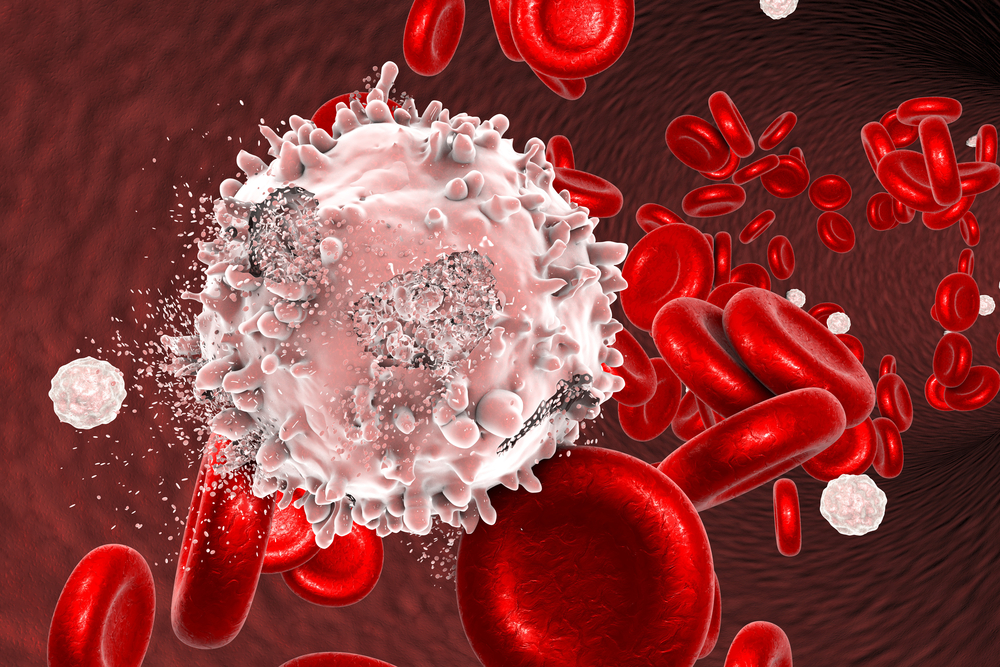We have talked about blood cancer in a separate article, and we now know that leukaemia is one of the types of blood cancers. It involves the cancer of the white blood cell.
The history of leukaemia diagnosis and treatment has evolved rapidly due to medical advancements. The outlook for people diagnosed with leukaemia is much better today than it was many years ago. Did you know that the current average 5-year survival/success rate for all types of leukaemia is over 50%? This means that over half of all patients are most likely to live at least five years or longer after diagnosis. Continue reading to find out more about the diagnosis and the treatment options available.
How does leukaemia happen?
Our blood has three types of cells:
- White blood cells which fight off infections
- Red blood cells which transport oxygen
- Platelets which are responsible for blood clot formation
Our bone marrow makes millions of new red blood cells daily. In leukaemia patients, the bone marrow will produce excessive amounts of white blood cells. This is due to mutations in the DNA of blood cells, which may be attributed by genetic and environmental factors. These white blood cells then crowd out red blood cells and platelets, preventing them from functioning normally. In addition, any new white blood cells being produced are abnormal and unable to fight infections. As a result, the entire immune system is impaired. This disease occurs most commonly in children.
How to diagnose leukaemia?
In the early stages of leukaemia, there may be no obvious symptoms. Hence, this cancer is usually accidentally discovered during a routine blood test or physical examination:
- Blood test: If the test shows that you have an abnormal white blood cell count, this may be the first sign of leukaemia. There may also be such cancer cells circulating in your blood.
- Physical exam: Your doctor may examine you for physical signs of leukaemia, such as swollen lymph nodes, liver enlargement, or pale skin resulting from anaemia.
To confirm the specific type of leukaemia you have, patients may do a bone marrow test. This involves a needle biopsy, which involves the use of a long needle to remove a bone marrow sample from your pelvic bone. The lab will then test this sample to analyse abnormal cancerous cells, chromosomal abnormalities, and DNA markers. These will provide information for your doctor to decide on the treatment option that is best suited for your diagnosis. Your doctor may also conduct a spinal tap, which involves retrieving fluid from your spinal cord to see if leukaemia has spread.
What are the treatment options?
Treatment options will vary, depending on the type of leukaemia you are diagnosed with, the severity, age, and pre-existing health condition. They may include:
Chemotherapy
This is the most common form of treatment for leukaemia that uses strong, cytotoxic drugs to attack and kill the leukaemia cells. The patient undergoing chemotherapy will be given blood or platelet transfusions to prevent or stop bleeding. This is important since leukaemia patients will have low counts of healthy blood cells. Some patients may undergo chemotherapy in the long term to ensure complete eradication of cancerous cells.
Radiation
Radiation therapy uses high energy beams to damage leukaemia cells and prevent their growth.
Stem cell transplant
A stem cell transplant is also known as a bone marrow transplant. Unhealthy bone marrow is placed with healthy stem cells that will regenerate your bone marrow. Before the transplant, radiation therapy will be conducted to destroy the unhealthy bone marrow. This treatment requires a donor with compatible genetic characteristics – for instance, a family member.
Targeted therapy
Targeted therapy uses drug treatments to target specific genes or proteins responsible for the growth of cancerous cells. This ensures that new cancerous cells are less likely to survive and proliferate. However, this therapy requires lifelong treatment.
Biologic therapy
This involves injecting of monoclonal antibodies, which are made by cloning a unique white blood cell. The antibodies will bind to cancerous cells, aiding your immune system to kill off the cancer cells.
Immunotherapy
Cancer cells can produce proteins that allow them to stay undetected by your immune system. Immunotherapy involves detecting these cells so that your immune system can fight against cancer cells.
Chimeric antigen receptor (CAR) T-cell therapy
T- cells are a kind of white blood cell known as lymphocytes that can fight against viral infection and boost immune function. In leukaemia patients, T-cells may not function normally. This treatment involves genetically modifying T-cells so that they can fight cancer more effectively.
What are the treatment goals?
For acute or fast progressing leukaemia, the most pressing treatment goal is to induce remission, decreasing the count of cancer cells. On the other hand, for chronic leukaemia, the disease progresses slower, allowing for more long-term forms of treatment.
For instance, Acute Myeloid Leukaemia (AML), one of the fastest-forming leukaemia and is typically treated with chemotherapy or radiation therapy to destroy leukaemia cells rapidly. Chronic lymphocytic leukaemia (CML) progresses slower, hence allowing for targeted therapy can be tried at the earlier stages.
Acute lymphoblastic leukaemia (ALL) is one of the most common cancers in children, and is usually treated with chemotherapy and stem cell transplants. Researchers are currently exploring the use of CAR T-cell therapy for older patients with ALL.
What’s next?
Although survival rates for this disease have increased over the years, it’s crucial to detect leukaemia in its early stages to have a higher success rate of complete remission. Unfortunately, there is no cure, and cancer may recur again in your lifetime, so early diagnosis and treatment are especially important. If you feel that you display any symptoms of leukaemia, do consult a doctor to confirm a diagnosis as soon as possible.












